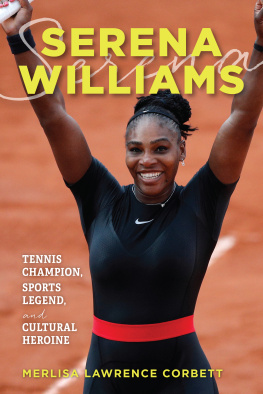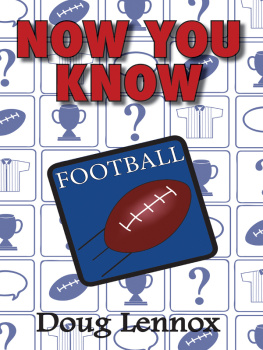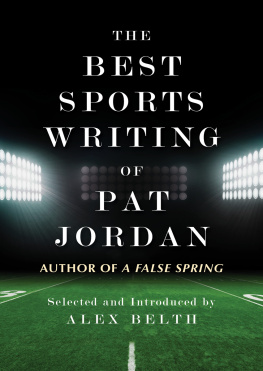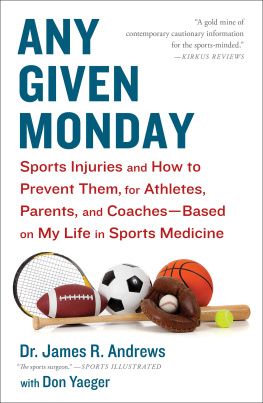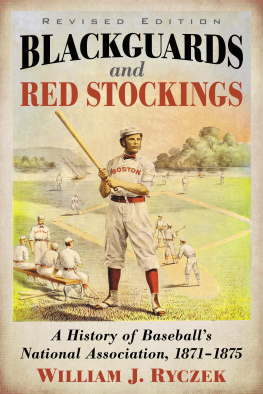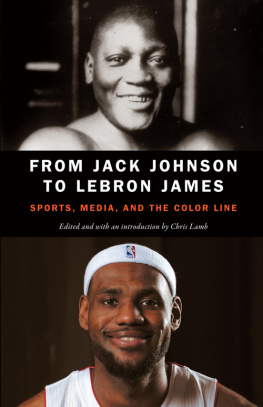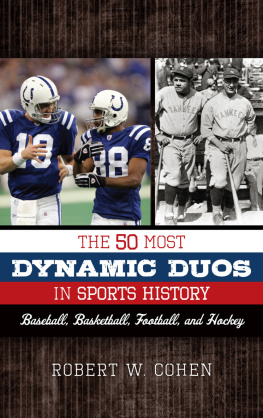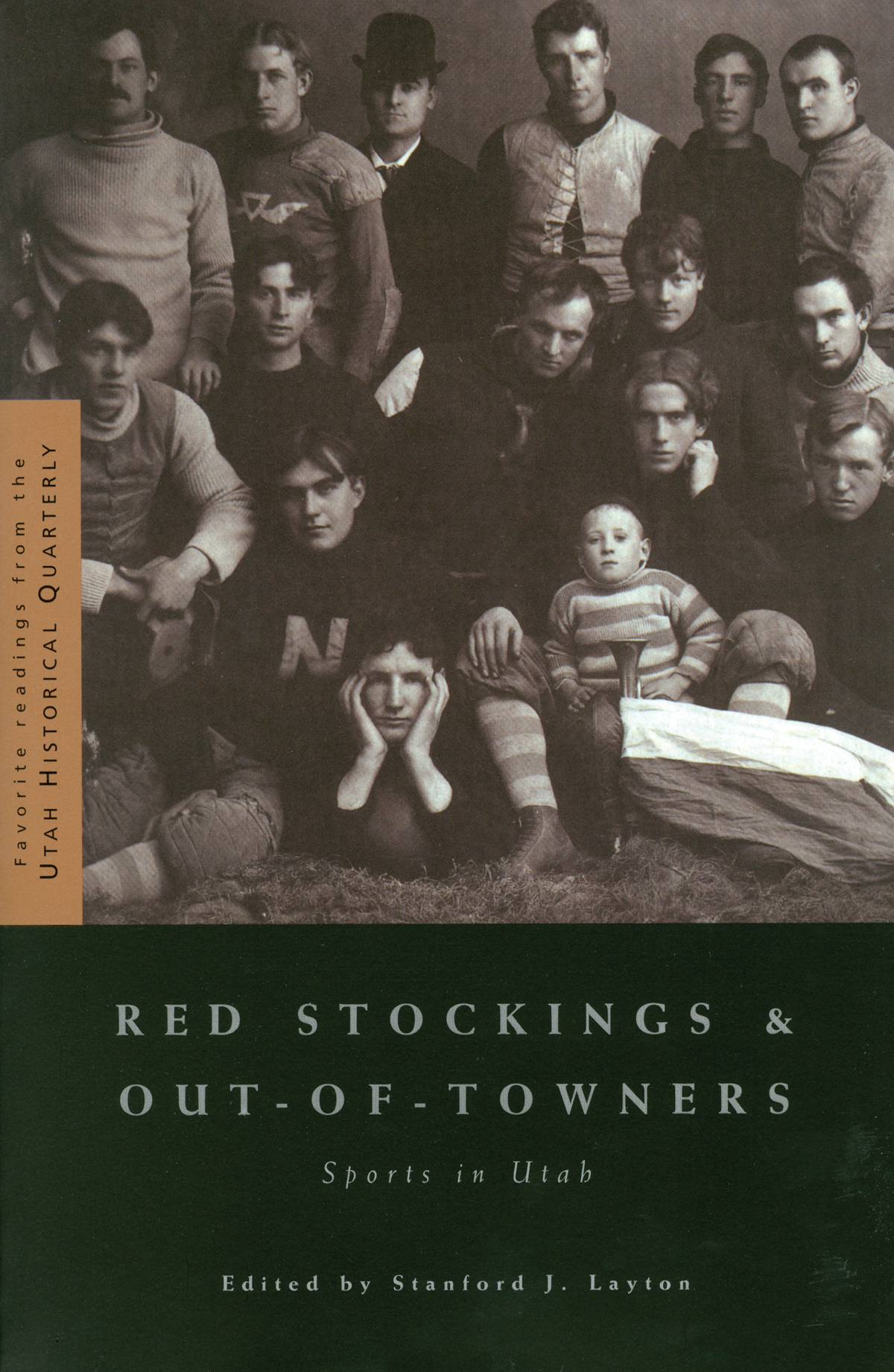RED STOCKINGS AND OUT-OF-TOWNERS
Sports in Utah
Favorite Readings from the
Utah Historical Quarterly
Edited by
Stanford J. Layton
Signature Books
Salt Lake City
Cover design by Ron Stucki
2003 Signature Books. All rights reserved.
Signature Books is a registered trademark of Signature Books Publishing, LLC
http://www.signaturebooks.com
Library of Congress Cataloging-in-Publication Data
Red stockings and out-of-towners : sports in Utah / edited by Stanford J. Layton.
p. cm.
Consists of essays originally appearing in Utah historical quarterly.
Includes bibliographical references.
Paper bound ISBN 1-56085-165-1
1. SportsUtahHistory. I. Layton, Stanford J. II. Utah historical quarterly.
GV584.U8 R44 2002
796.09792dc21
2002036663
Contents
Editors Introduction
I n his engaging book, Americas Obsession: Sports and Society Since 1945 , Richard O. Davies sees sports in America as readily divisible into two eras. The pre-modern era provided participants and spectators with leisure activitya type of escape from the tensions and worries of life. The modern period, on the other hand, is much less benign and has, in fact, tended toward the obsessive (and oftentimes destructive) for growing numbers of Americans.
Though perhaps a bit simplistic, Daviess model is a handy one for sports history. This particular specialty is, after all, still in relative infancy. But as organized sports continue to grow in economic importance and as they insist on spilling relentlessly into matters of labor relations, gender-role definition, medical specialties, litigation and legal precedents, and much else, sports historians will grow in number, visibility, and importance. So, too, will their methodological models, theses, and historiographical nuances.
Anthologies of the type offered here will help move that process along. Perceptive readers will find much to pique their notions of social history in the pages that follow. But that is serendipity, not the primary objective. The articles gathered together for this volume, like those of the two preceding books in this series, are personal favorites and were chosen for that reason. Each can stand on entertainment value alone. Whether approached with a broader thesis in mind or not, these selections will delight the reader simply by their tapestry of rich story lines, human interest elements, and action.
Nevertheless, the first half-dozen articles provide more than a little grist for Richard Daviess mill. The first and second, being set squarely in the frontier era, fit the model of escapism well. Over a century ago, Salt Lake baseball fans filled the stands to cheer on their team and find a few hours of excitement and enchantment at the ballpark. But Utah, it seems, has a way of being slightly different, and its experience with early baseball was no exception. Caught up in the religious polarization of that time and place, Americas nascent pastime took on an extra dimension. Two pre-eminent sports historians responded to the challenge of researching this little-known story. Much more than a play-by-play account of runs, hits, and errors, these two articles contain enlightening sociological and demographic data and some interesting conclusions. First published in a 1984 issue of the Utah Historical Quarterly, they deserve a replay in this book of favorites.
Fast forward through a century of bewildering change and come to rest in northern Utah during the 1950s-60s for our next selection. Utah is now mainstream, sports and other forms of entertainment are big business, and Americans everywhere are swept up in fast-paced lifestyles. Baseball is one of the few forms to have remained essentially unchanged. Each Saturday afternoon during the summer months, men put away their hand tools and farm implements in favor of bats and balls as they congregate at diamonds throughout the county. At places like Cornish, Smithfield, and Lewiston, they come to compete, their family members and friends watching and cheering from the old bench-style grandstands. It is Utahs last chapter in community baseball, and only Cache Valley has the demographics to support it. The Wasatch Front cities have already begun to implode into a megalopolis, and most of the remainder of the state is too rural. Fortunately, another talented historian has captured this vanishing moment for our enjoyment. It is a wonderfully nostalgic story of personal aspiration, family dynamics, civic pride, and community growth.
Sitting squarely astride Richard Daviess chronological dividing line between the early and the modern eras comes our fourth article. It is a rollicking story of the Salt Lake Seagulls within the Pacific Coast Football League. A shoestring operation from the beginning, this venture into professional sports was to foreshadow many of the complexities of todays sports franchiseschallenges of marketing, ambiguous relations with local government, inflated attendance figures, uncertain payrolls, unpredictable athletes, whispers of point shaving, and much more. Slip into the Seagulls huddle, watch in astonishment as the quarterback diagrams his play on the grass, and be prepared for a wild ride.
For reasons not clear in the historical record, Utah has had a much higher profile in boxing than most other western states, the obvious exceptions being Nevada and California. This may be due to such random occurrences as the Dempsey familys move to Utah, an early sports editor for the Salt Lake Herald named Bill Rishel who foresaw possibilities that no one else did, or the appearance of a talented fight promoter named Tex Rickard. Certainly all of these men played a role, and their collective impact deserves analysis in the two short articles included here. One looks at the larger-than-life Jack Dempsey through the eyes of an admiring boy. The other pulls no punches in describing the underside of boxing, noting Rickards brief sojourn in Utah on his way to the big time, and offering hints as to why this sport, for all its savagery and vulnerability to corruption, continues to appeal to so many spectators.
From the most combative of sports, we turn to the most genteel in a fifty-year survey of tennis in Utah. This work makes its way into my list of favorites for many reasons, not the least of which is the opportunity it affords to glimpse women athletes during the pre-Title IX years. The article also advances a worthy thesisthat Utah has always been a leader in promoting tennis. The authors explanation for this, including a look at the role of personalities, rings as straight and true as a Bobby Riggs serve.
Racing enters the spotlight for chapters 8, 9, and 10, selections that are marvelously entertaining as well as instructive. Again we see a typical story but with a slight Utah difference. The excitement and fan appeal of high-speed bicycles on the banked hardwood track at the old Salt Palace is captured in original documents better than any historian could describe it. Two letters, appropriately annotated, whisk the reader back a century in time to a world of austere wood and frame coliseums, flanked by carnivals and freak shows, to experience the thrill of men and machines in no-holds-barred competition against the clock, gravity, and each other. It is a timeless spectacle, as old as antiquity and as recent as yesterdays sports page, given an extra measure of meaning here by a gifted writer who witnessed it all as a bug-eyed kid.
Less contemporary, but eminently intriguing for todays student of history, is the story of pari-mutuel betting at horse tracks in the mid-1920s. At first blush an unthinkable part of Utahs social-cultural environment, pari-mutuel betting won a two-year authorization from the state legislature following a thorough public airing of the pros and cons. Ironically, its repeal was led by the same legislator who had introduced and championed the measure in the earlier biennial session. That is not the only irony to emerge from this article, as the careful reader will discover.


